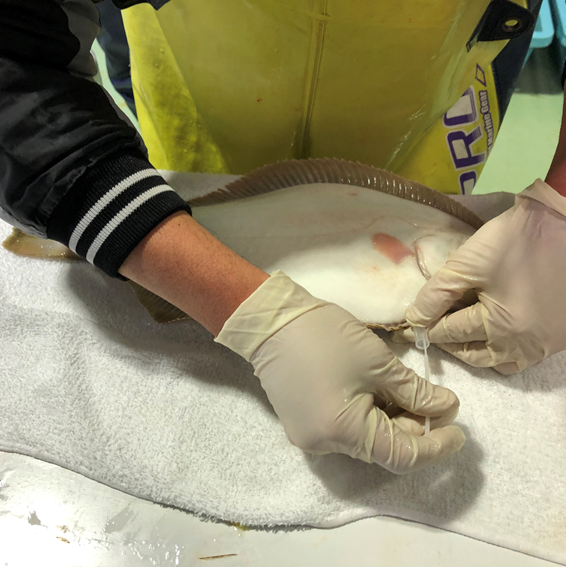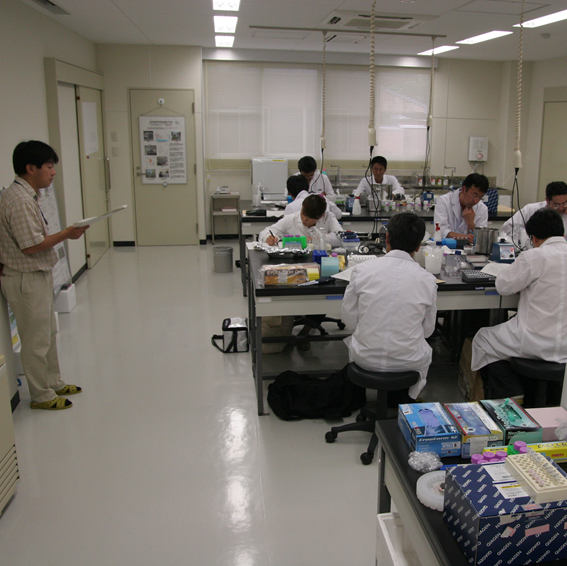Pathology Division
Infectious diseases can impact aquaculture severely. To address and/or mitigate the problem, scientists in the Pathology Division study pathogens and pathologies of various diseases. When necessary, the division develops tools, such as vaccines, to control infectious diseases. Additionally, according the Sustainable Aquaculture Production Assurance Act, the Japanese government has designated this division as the laboratory for the confirmatory diagnosis of diseases requiring quarantine and risk control at the national level. The division offers technical support to prefectural fisheries research laboratories, which are directly responsible for on-site diagnosis, and contributes to international organizations, such as the World Organisation for Animal Health (WOAH)*.
The Pathology Division consists of the Immunology Group, Etiology Group, and Diagnosis Group.
Immunology Group
The Immunology Group aims to control disease outbreaks by developing vaccines and immunological assays for diagnosis. Additionally, the group performs basic research on fish immunology. Topics include host immune responses to pathogens and the development of the immune system in fish.
Etiology Group
The mission of the Etiology Group is to characterize pathogens that can substantially influence aquaculture. The group's work includes assessing the pathogenicity of pathogens in fish species that are crucial for the Japanese fisheries industry.
Diagnosis Group
The Diagnosis Group investigates the causes of the diseases that local fisheries laboratories cannot diagnose. The group also conducts confirmatory diagnostic tests for diseases specified by the government. Additionally, the group is designated as a reference laboratory for koi herpesvirus disease and red sea bream iridoviral disease by the WOAH*.
*Reference laboratories are specialized laboratories designated by the WOAH to investigate and address specific animal diseases. They function as global centers of expertise, offering scientific and technical support, and professional advice on diagnosis, epidemiology, and disease control.


A scene of a lecture and a practical lesson


